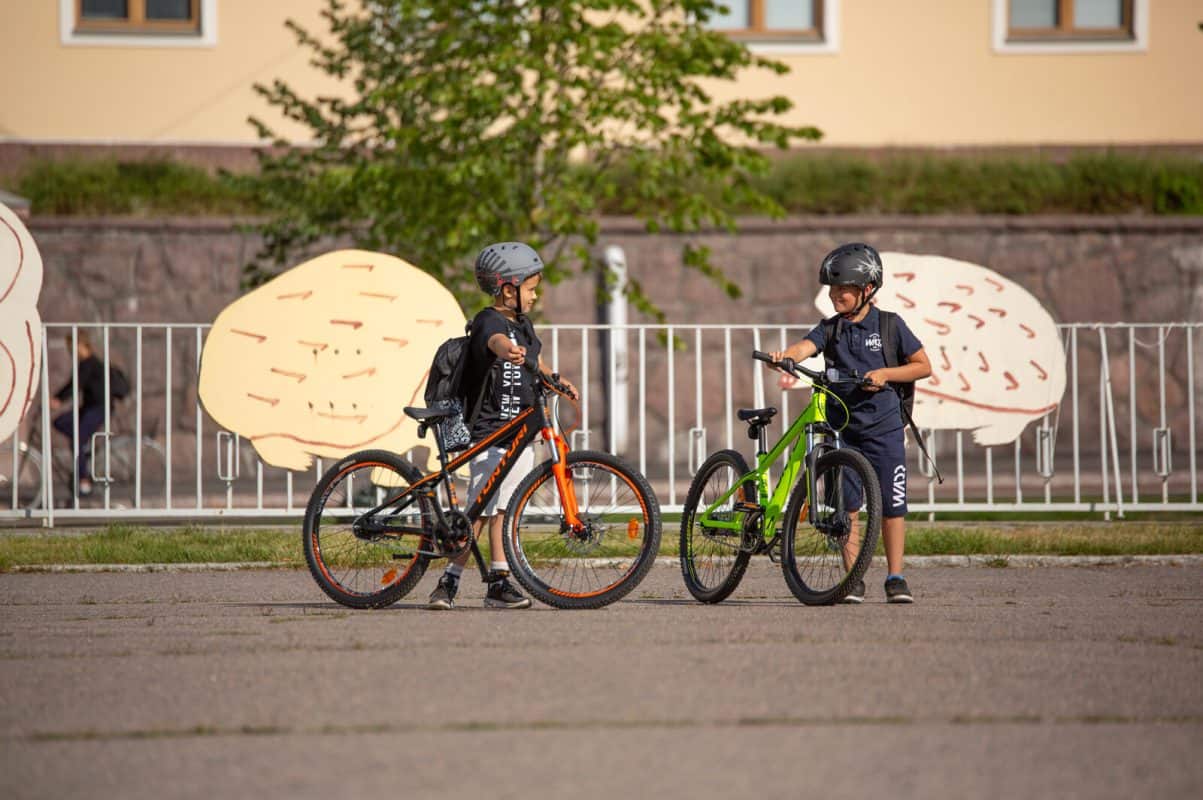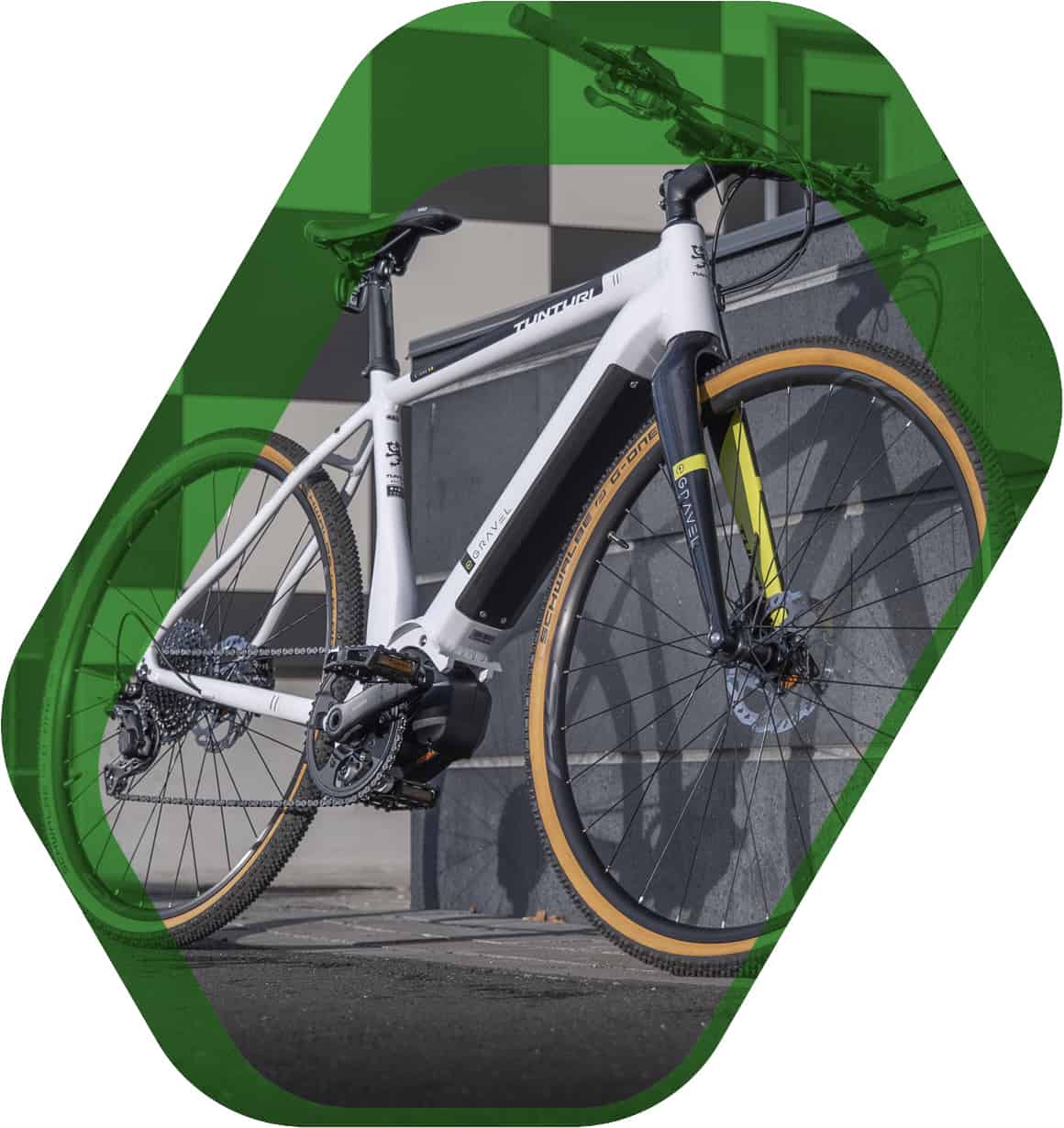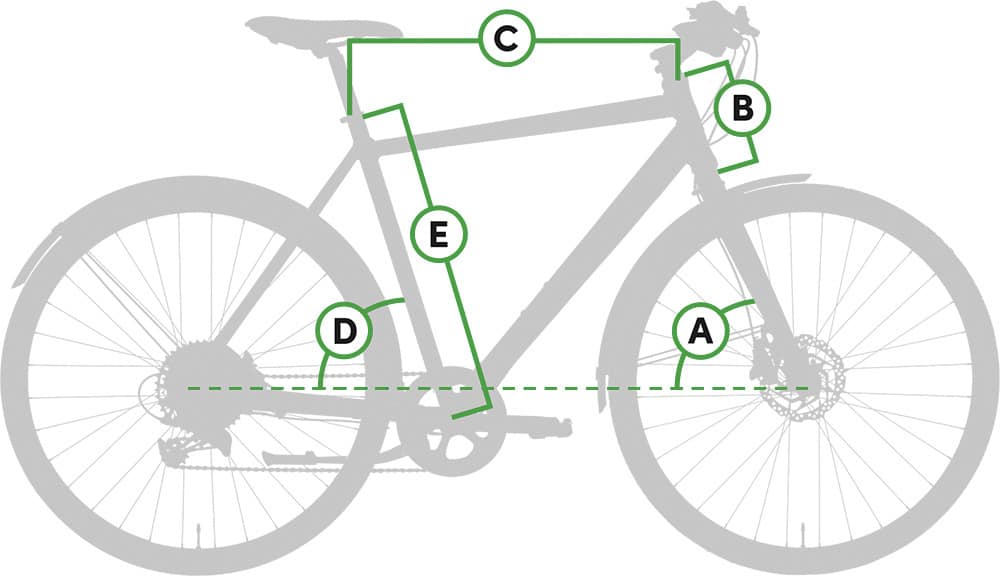CHOOSING A BIKE
You should invest some time into buying a bicycle and listen to tips by professionals.
Bike according to use
Before buying, you should consider what kind of cycling you do most. Do you pedal to work on asphalt roads, do you like to splash mud on forest trails or keep your eyes peeled on your heart rate in the saddle of a road bike?
Once you are clear about the primary purpose of use, you can survey which bike models are suitable for it. Of course, price will also affect the choice of model. Price is reasonably directly proportional to the quality. Money will buy you gears that shift slightly more smoothly, more efficient brakes or bearings that roll better. All Tunturi bikes are made of high-quality parts, so every model on offer is a good choice.
Once the model has been selected, you need to choose the right size frame for the user. If necessary, the bike can be equipped with accessories such as a luggage rack, fenders or even a fixed lock. Then it’s time to enjoy pedalling – not forgetting social media. The hashtag #NBD (new bike day) is a nice to show your friends and to remind yourself of the first few metres on a new bike!

HEAD TUBE ANGLE

HEAD TUBE LENGTH

FRAME LENGTH

SEAT TUBE ANGLE

FRAME HEIGHT
Choosing a suitable bicycle for a child
Do you remember your first bicycle? Many of us at least remember its colour and the pride we felt when we no longer needed stabilisers. To enable learning the life-long skill of cycling without complications, it is important to choose a correctly sized high-quality bike for your child.


This is how you choose a suitable bike for your child
Finding a bike that fits a child’s dimensions is essential both in terms of safety and the development of cycling skills. When looking for a first bike, it’s good to remember that the bike shouldn’t be too big because the child’s feet should reach the ground firmly when learning to pedal. The correct frame and tyre size along with appropriate dimensioning of the frame, affect balance and steering control. The best driving position for a child is upright, and they will feel stable when their centre of gravity is correct. This makes it easier to maintain balance and learning will be fun. To find a suitable bike for your child, check out the attached recommended sizes for children’s bikes.

Gears or no gears?
Once the child has mastered the basics of cycling, you may wan to consider getting them a bike with gears. You shouldn’t be afraid of gears; they are a great addition to the enjoyment of cycling. They make it easier for the child to pedal in the company of parents even uphill, for example. You should also pay attention when buying a bike for a girl: for some reason, boys often get geared bikes, but girls are more often given single-speed bikes. In terms of safe cycling, it is good to learn to use the gears at a young age. Gears also increase riding comfort, which results in using the bike more often. A child will naturally learn to ride a bike when its enjoyable.

Indicative recommended sizes of children’s bikes
Tyre size
26″
24″
20″
16″
12″
Child’s height/age (estimate)
135–160 cm / over 11 years
125–140 cm / 8–11 years
110–125 cm / 5–8 years
90–110 cm / 3–5 years
80–100 cm / 2–4 years

Take the child with you when shopping for a bike
When choosing the correct size bicycle for a child, it is very important to test ride it. So, take the child with you bike shopping, and ask the sales person for advice on choosing a bike. The following three factors can be used as a rule of thumb: The feet must reach the ground, the knees must not hit the handlebars and the driving position must be upright. When purchasing a children’s bicycle, you should also consider the child’s cycling skills. Others know how to use gears and hand brakes. For others, it is better to get a bike with a foot brake and internal-gear hubs. It is worth noting that children grow every year, so there is no reason to get a bicycle that is too small. The height of the seat can be raised little by little, extending the life of the bike. It is worth investing in the quality of a children’s bicycle because a high-quality bike can be recycled, for example, for younger siblings. A high-quality children’s bike will also retain its value well.








